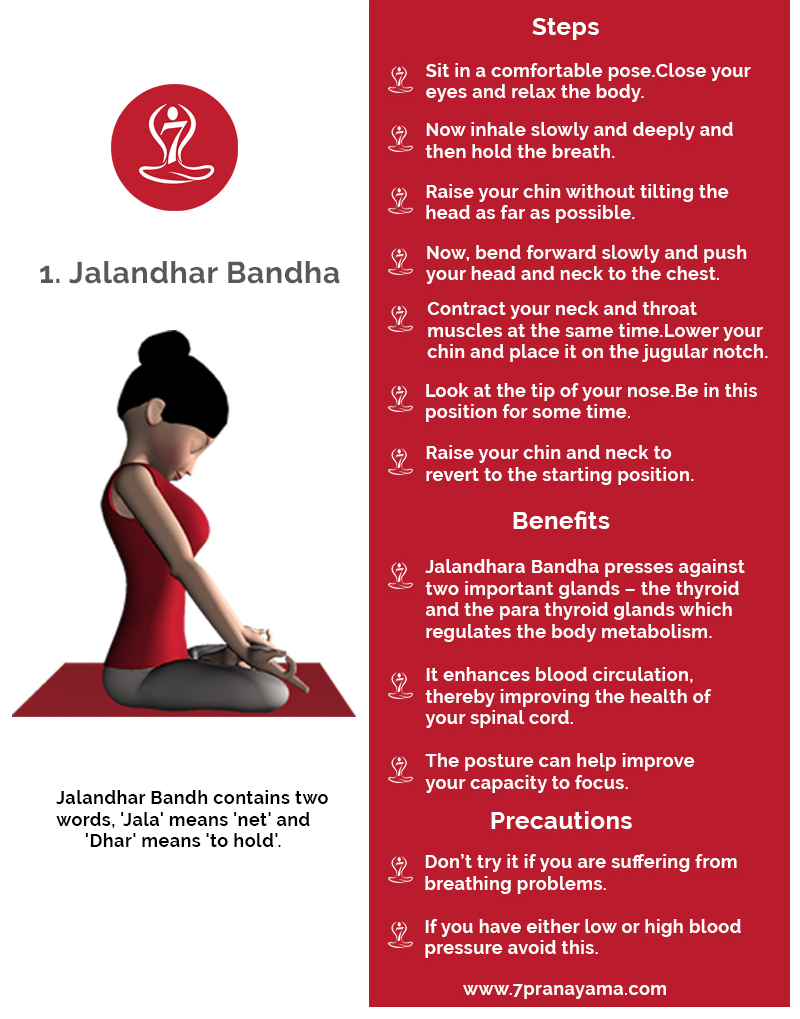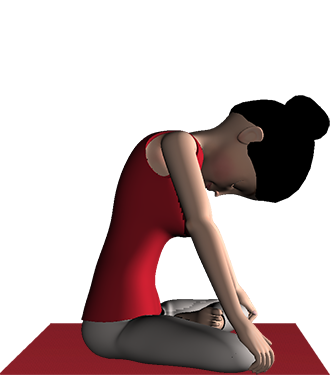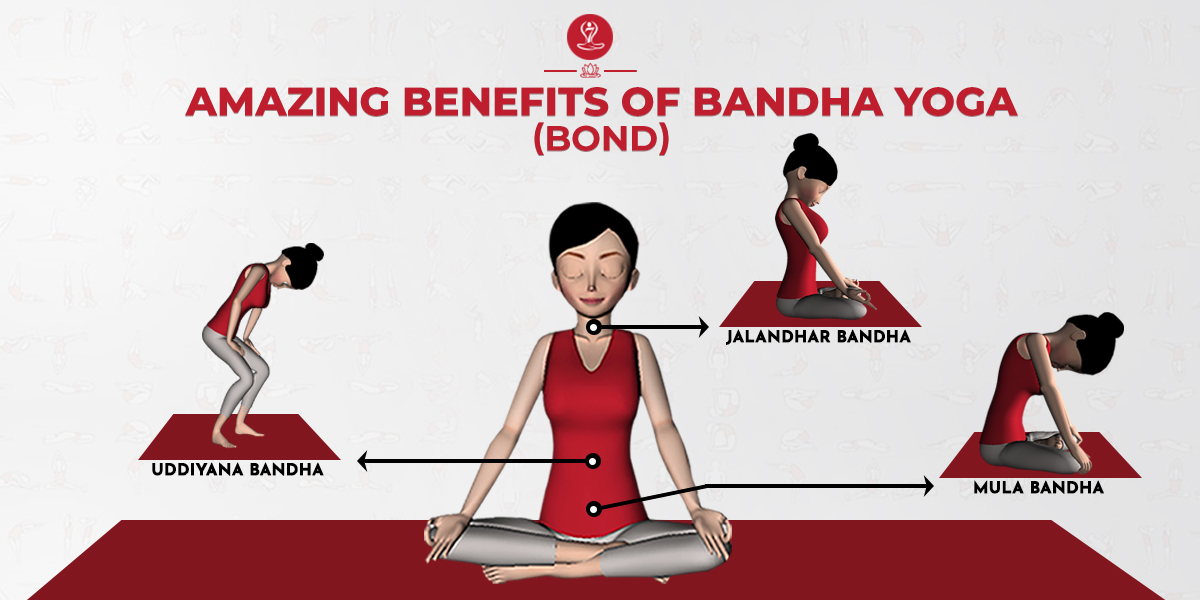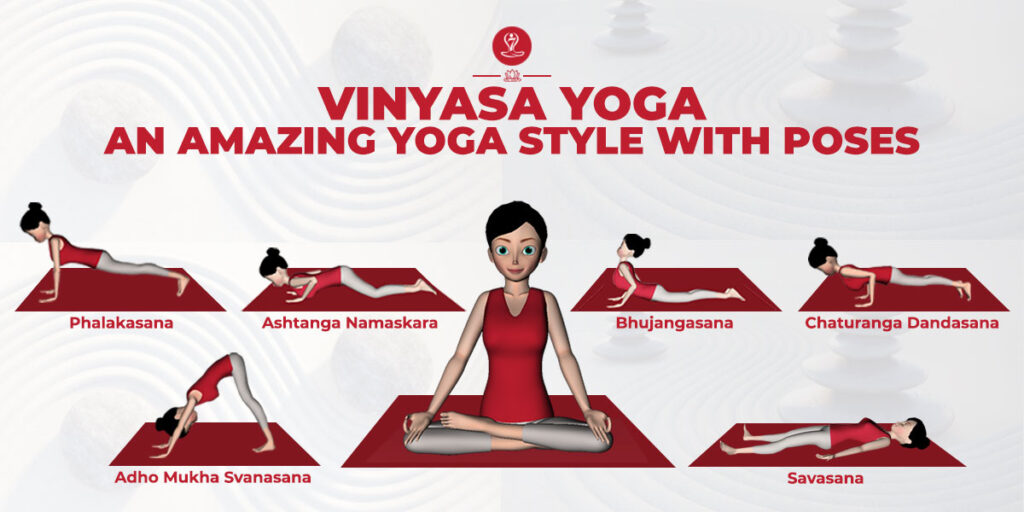Bandha Yoga is an energetic lock that contains the prana. There are three bandhas Jalandhar, Mula, and Uddiyana. Bandhas are basically muscular contractions that help you to breathe, focus on your awareness, and keep your body strong.
Importance of bandhas in yoga
Bandhas are an integral part of yoga practice and are considered to be powerful tools for controlling and directing the flow of energy in the body. Here are some of the key benefits and importance of practicing bandhas in yoga:
- Increases energy flow: The practice of bandhas helps to stimulate the flow of prana (life force energy) throughout the body, which can improve overall health, vitality, and well-being.
- Enhances concentration: By focusing the mind on the activation of the bandhas, practitioners can develop greater concentration, awareness, and mindfulness.
- Supports physical health: The engagement of bandhas can help to strengthen the muscles in the pelvic floor, abdomen, and throat, which can improve posture, digestion, and respiratory function.
- Balances the chakras: Each bandha is associated with one of the chakras (energy centers) in the body, and the practice of bandhas can help to activate and balance these chakras, promoting greater physical, emotional, and spiritual balance.
- Deepens the practice: The use of bandhas can add a deeper layer of awareness and intention to yoga practice, helping practitioners to connect more fully with their breath, body, and inner self.
It’s important to note that the practice of bandhas should be approached with care and guidance from a qualified yoga teacher, especially for those with pre-existing medical conditions. With proper practice and guidance, the use of bandhas can be a powerful tool for enhancing physical, mental, and spiritual health. let us have 3 bandhas in
Primary Bandhas in yoga
Yoga bandhas are internal body locks or energy seals that are commonly used in yoga practices. There are three primary bandhas in yoga:
1. Jalandhar Bandha
Jalandhar Bandh contains two words, ‘Jala’ means ‘net’ and ‘Dhar’ means ‘to hold’. In this bandha, the network of energy channels or nadis of the body is locked. This bandha is also known as chin lock.

How to do Jalandhar Bandha:
- Sit in a comfortable yoga sitting pose sukahasna .
- Place the palms on the knees and make sure that the knees are firmly touching the floor.
- Close your eyes and relax the body. Breathe normally.
- Now inhale slowly and deeply and then hold the breath.
- Raise your chin without tilting the head as far as possible.
- Now, bend forward slowly and push your head and neck to the chest.
- Now, contract your neck and throat muscles at the same time.
- Lower your chin and place it on the jugular notch.
- Keep your chin down.
- Contract the throat and neck muscles and keep your back straightened.
- Look at the tip of your nose.
- Be in this position for some time.
- Raise your chin and neck to revert to the starting position.

Benefits of Jalandhar Bandha
- Jalandhara Bandha presses against two important glands – the thyroid and the parathyroid glands. These two glands regulate the body metabolism.
- This posture works the spinal cord. It enhances blood circulation, thereby improving the health of your spinal cord.
- The posture can help improve your capacity to focus.
- It helps free the shoulders and aligns the upper spine properly.
Precaution Jalandhar Bandha:
- Don’t try it if you are suffering from breathing problems.
- If you have either low or high blood pressure avoid this.
“Practice Bandha: Download today app 7pranayama from App store or Play store”
2. Uddiyana Bandha:

Uddiyana Bandha is practiced by pulling the abdomen inwards after exhalation and holding the breath outside. In this Bandha, the abdominal muscles presses the organs in the abdomen against the wall behind the organ, next to the spinal column.
How to do Uddiyana Bandha:
- Stand with feet hip distance apart and rest hands on knees.
- Bend knees and head slightly.

- Exhale completely with force. Notice that you do this pressing in with both your chest and abdomen.
- Hold your breath and do not let any air into your lungs.
- Inhale through the nose and exhale forcefully. Tighten abs to push air out of lungs.
- Focus onhollowed your stomach and feeling the abdominal lift.
- Lower chin to the chest like in Jalandhar bandha.
- Hold for 5 to 15 seconds. Release abdominals, lift chin and breathe normally.

- Perform at least 3 more rounds. Take rest after each round.
Benefits of Uddiyana Bandha:
- It strengthens abdominal muscles and the diaphragm.
- Increases in lung capacity.
- Improves the coordination between the voluntary and involuntary nervous systemss.
- Massages abdominal muscles.
- Massages vital organs such as the heart, stomach, liver, pancreas, kidneys, and gallbladder and thus enhance their performance.
- Improves digestion.
- Purifies the digestive tract of toxins.
- Stimulates blood flow to the brain.
Precaution Uddiyana Bandha:
- Persons suffering from stomach or intestinal ulcers should not perform this bandh.
- Hernia patients should not perform this bandh.
- Persons suffering from high blood pressure and heart disease should avoid this bandh.
- A person suffering from Glaucoma should not try this.
- Should not be done during pregnancy and menstruation.
3. Mula Bandha

It is also known as a root lock. It is practiced at the root of the spine. Through the practice of this bandha, we can gain a certain amount of control over this energy. It eliminates bodily ailments along with the increase in vital energy.
Steps of Mula Bandha:
- Sit erect on the carpet in Siddhasana, pressing well the perineum with the left heel.
- Keep your back erect, your neck straight and your head pointing forwards.
- Take a deep breath.
- Now exhale slowly. As you exhale, first tighten the muscles around your anus and then your pelvic floor muscle and your sphincter muscles.
- Intensify the contraction as you exhale completely.
- Now, bend forward slowly and push your head and neck to the chest.
- Hold this pose for a few seconds and then release as you inhale.

Benefits of Mula Bandha:
- This bandh prevents piles.
- Mool Bandha improves the secretion of glands situated in the lower abdominal is of the body.
- It stimulates the digestive power in the naval region.
- It purifies, balances, and energizes the pelvic and urogenital region.
- This is an important Bandh for celibacy.
- Mool Bandha improves concentration power.
- Our nerves and breath are brought under control.
- It removes the weakness of excretory organs and dispels with constipation.
- It can help to relieve depression.
Precaution Mula Bandha:
- People suffering from a hernia should not perform this bandha.
- Women suffering from gynecological problems should consult their doctor before performing this bandha.
- Practice mula bandh on an empty stomach.
Conclusion
Yoga bandhas are often used in combination with pranayama (breathing techniques) and asana (yoga poses) to enhance the physical, mental, and energetic benefits of the practice. However, it’s important to learn and practice bandhas under the guidance of a qualified yoga teacher to ensure proper technique and avoid injury.


